Rug tufting is a unique art in that you can create enormous works with relatively few materials. Once you’ve invested in a good tufting gun, you’ve got nearly everything you need to start tufting!
The problem is, choosing the right tufting gun is difficult. Amazon and other retailers are filled with cheap knock-off tufting guns that break down after your first few rugs.
To help you choose the right tufting gun for you, I put together this comprehensive buyer’s guide based on my years of experience tufting. First we’ll cover a few key details you need to know, then we’ll have a look at the best tufting guns, where to buy, and more.
If you’re just looking for a quick recommendation, check out any of the models listed below. They won’t do you wrong!
Affiliate disclosure: Articles on Tiny Workshops may contain affiliate links.
The Duo is capable of both cut and loop pile tufting, making it a versatile choice for any ambitious tufter.
For beginners, the AK-I (cut pile) and AK-II (loop pile) are easy to set up and use, making them great first rug guns.
This pneumatic tufting gun can push out super high pile rugs in both cut and loop configurations. But it’s pricey for beginners.
The KRD-1 is mostly outclassed by the Duo, but it’s still a good intermediate tufting machine.
Table of Contents
What is a tufting gun?
A tufting gun is a handheld tufting machine used to make rugs. It’s much faster than manual methods like latch hook or punch needle, but a step down from industrial tufting machines for carpets.
Tufting guns have a lot of advantages over other rug making techniques. As mentioned above, they’re very fast. A medium-sized rug can be knocked out in a few hours.
They’re also relatively affordable. A few hundred dollars will get you a solid machine, and other rug tufting supplies won’t break the bank, either.
Rug tufting has been around for decades, but it’s come back into style recently thanks to social media platforms like TikTok. Check out some of our favorite RugTok artists for some quick inspo!
Want to get started tufting right away? This starter kit from Tuft the World has just what you need to tuft your first rug. Includes a tufting gun, frame, and tufting cloth.
How does it work?
Tufting guns work very much like a sewing machine. It has a “foot” that rests against the cloth or backing material, then a large needle pushes yarn through the material, leaving some on the other side.
Depending on the type of tufting gun you have (or the settings), it will either leave a loop (loop pile) or a strand (cut pile) of yarn on the other side. Some models can also do both by adjusting the settings. More on that in the section below.
One very important thing to keep in mind is that you can run more than one thread of yarn through the tufting gun at a time. Use creative combinations to make interesting patterns and colors, or just save time by pushing through more threads at once!
Loop pile vs cut pile tufting guns
The biggest decision you need to make before buying a tufting gun is whether or not you want a loop pile or cut pile model. Essentially, cut pile rug guns have a pair of scissors that snip the yarn with each stroke, while loop pile guns work more like a standard sewing machine.
There are also some that can do both, but most combination models are time-consuming and difficult to swap.
For beginners though, you should absolutely stick to a simple model.
So how do you know which one to choose? Well, there isn’t really a right answer here.
Both loop pile and cut pile tufting guns are great fun, and both can be used to create incredible pieces. Which one you choose will largely be personal preference.
Thankfully, the newer Duo model offers the best of both worlds. It’s easy to swap back and forth, making it the ideal first machine for beginners. If you do a lot of tufting though, you may want one of each to reduce downtime.
Low pile vs high pile tufting guns
Another important aspect of tufting guns is pile height, or how tall the yarn is on a finished rug. The easiest way to explain this is to think about a thick, 70s-style shag rug. That’s high pile, with most normal rugs falling into the low pile category.
It’s also worth noting that high or low pile applies to both cut and loop machines. However, loop pile is typically shorter because long loops don’t look or wear very well.
As for which one to get, I’d highly recommend going with a low pile machine. First of all, they’re much cheaper, running roughly a third the cost of high-pile tufting guns. Furthermore, they’re usually easier to set up and use.
The only high-pile machine I recommend is the AK-III. It’s capable of both cut and loop pile tufting, and it gets its extra power by being a pneumatic machine.
That means you’ll need an air compressor like this one, which costs hundreds of dollars. It’s worth the cost if you’re a professional tufter, but for beginners, it’s a tough pill to swallow.
However, it’s worth pointing out that there will soon be two more versions of the Duo for medium and high pile tufting at a much lower price. I’m waiting for them both to arrive for testing and will update this article soon!
All of the shops listed below include details about pile lengths for each machine, so click through to learn more.
Best tufting guns
With all that background info out of the way, we can finally get to the main show: which tufting guns to buy and where to buy them!
You’ll find a lot of junk models (especially on Amazon, avoid those), but I’ve selected six of the best tufting guns that are reliable and easy to use for both beginners and experts alike.
1. The Duo Cut/Loop Pile Tufting Gun
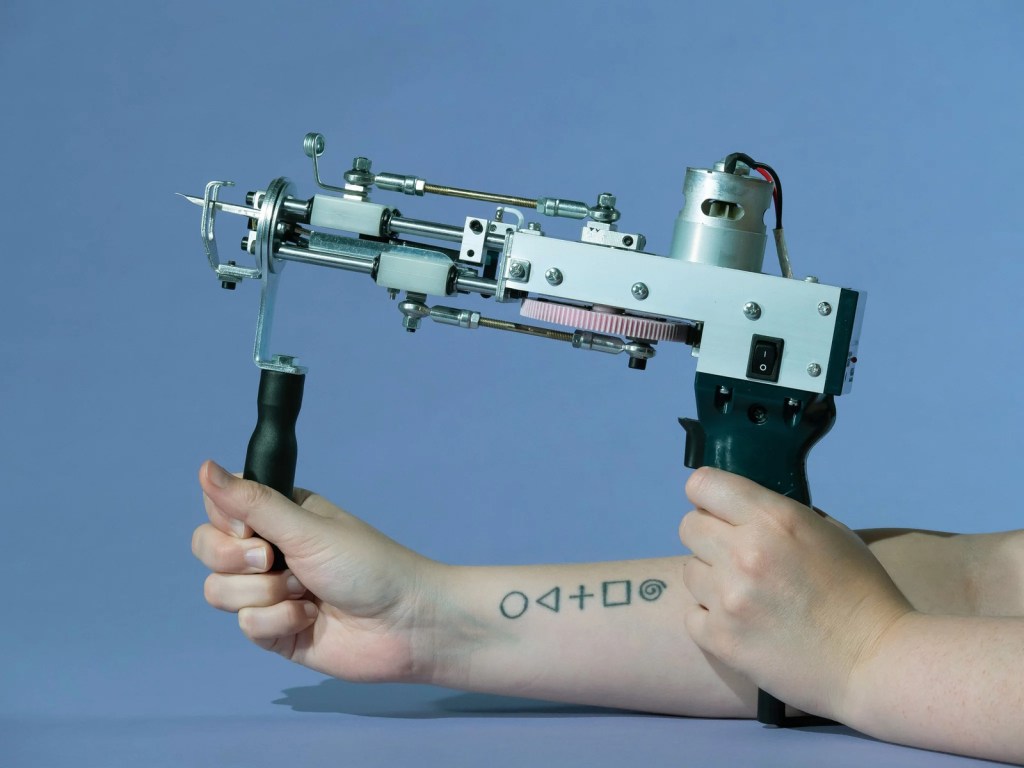
The Duo is a new model in the same line as the ever-popular AK-I and AK-II tufting machines, but with the capability to do both. That’s right, this one machine can do everything you’ll ever need to make tons of cool rugs!
This isn’t the only combination machine, but it is by far the easiest to use. I’ve always recommended the AK-I and AK-II for this reason, so this is an easy buy for both beginners and pros alike.
Compared to the other two machines, this one is also quieter. It also has an improved gear mechanism that makes it safer and less prone to vibration.
It can be tricky to find this model online (DO NOT USE AMAZON), but for anyone in the US, Tuft the World gets my highest marks. They have the best customer support around, and you can save 15% with the code TINY at checkout!
For anyone outside the US, this Etsy shop has the best price and free shipping around the globe. You can also get it with US, UK, EU, or AU plugs.
As mentioned above, there will be two more models of this tufting gun for medium and high pile rigs. I will update this article as soon as they arrive for testing!
2. AK-I Cut Pile Tufting Gun

If you want a very easy to use tufting gun for beginners, the AK-I is my top recommendation. It’s limited to cut pile tufting, but it remains a popular option because of just how easy it is to use.
This thing is easy to set up and hard to break, both of which are extremely common problems for budding tufters. Plus, it weighs just 3lbs (1.4kg), whereas other models can weigh five times that. It’s great for long tufting sessions.
So why buy this model instead of the Duo above? Well, for starters it’s (slightly) cheaper. It can also be beneficial to have a few tufting guns to avoid swapping threads. Plus, changing from cut to loop pile on the Duo can be time-consuming and tricky for beginners!
This one is also easier to use (it was the first tufting machine I got years ago) and I highly recommend it. Unfortunately, Tuft the World no longer sells it, so Etsy is your friend here.
3. AK-II Loop Pile Tufting Gun
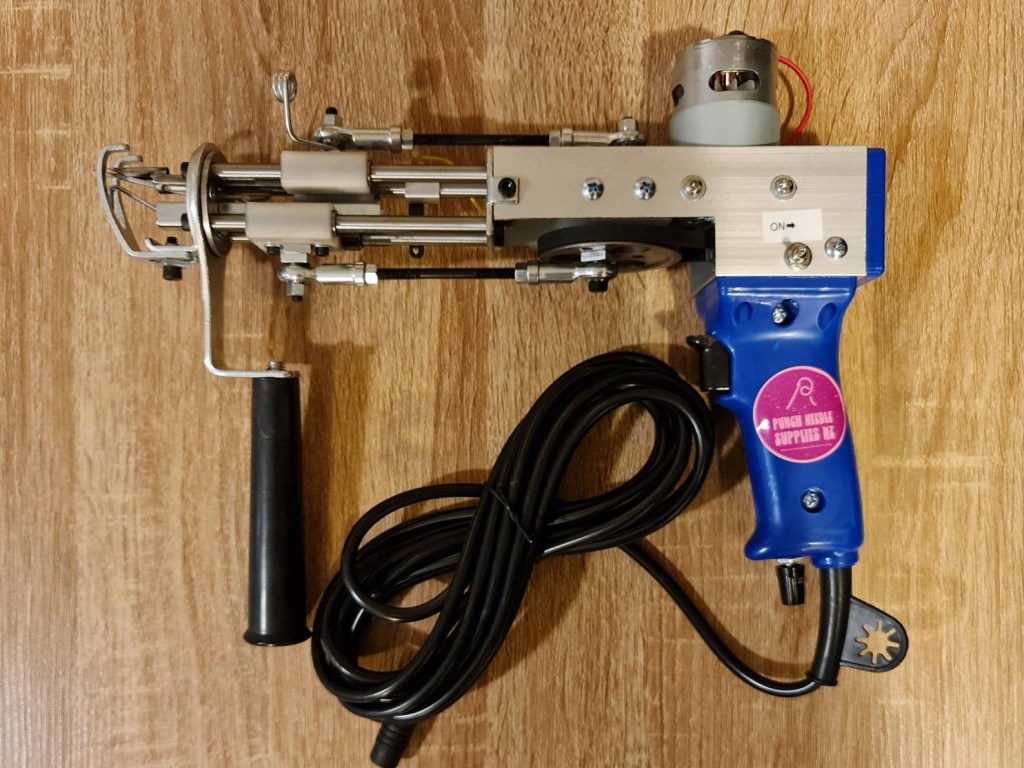
Next up is the above machine’s twin sister, but this time it’s aimed at loop-pile tufting.
All of the benefits of the models above still apply here: it’s lightweight, durable, and easy to set up. The only difference between the two is the type of rugs they can create.
However, it can be very difficult to get your hands on, with Tuft the World no longer stocking it and Amazon filled with poor-quality knock-offs.
Again though, the same shop mentioned above offers great pricing and shipping times of just over a week no matter where you live around the globe.
4. KRD-I Cut and Loop Pile Tufting Gun
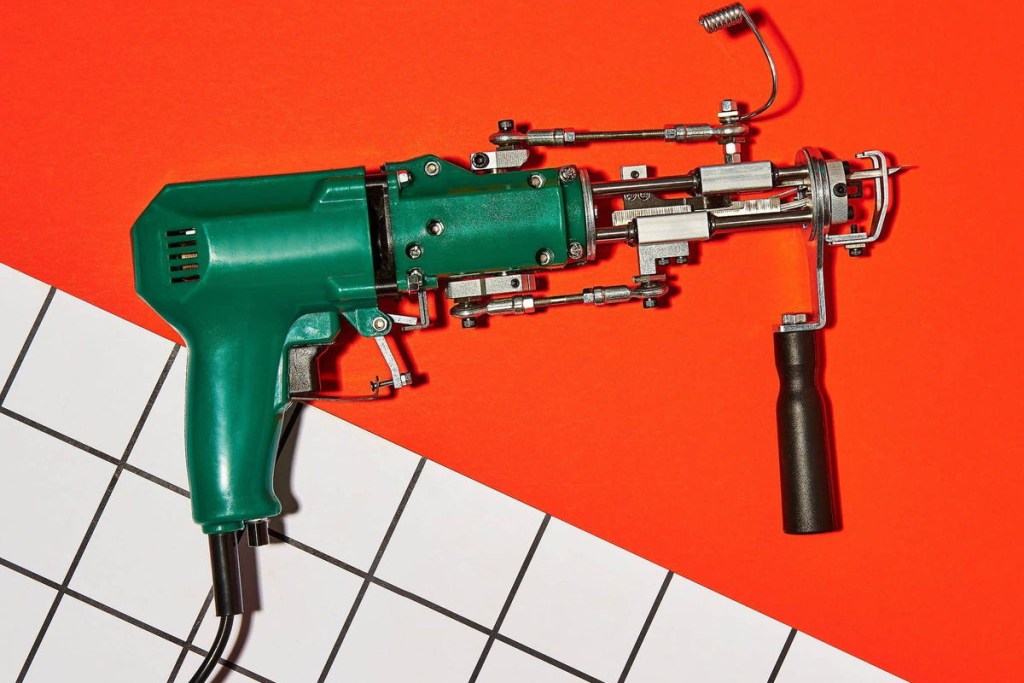
If you want a more powerful tufting gun that’s capable of both cut and loop pile, this is the best option (for now).
Featuring an improved design over its predecessor the ZQ-II, this is an industrial-grade tufting machine. It supports both 110V and 220V power, with a handy speed control knob to slow it all down when you need to.
However, this isn’t a tufting machine for beginners. Swapping between modes requires some expertise, so it’s best left for intermediate or advanced tufters who know their way around a basic machine. Beginners should stick to the Duo above.
The best place to buy this machine is the same shop as above. It’s an older model, so it can be hard to get your hands on new.
5. AK-III Pneumatic Combo Tufting Machine
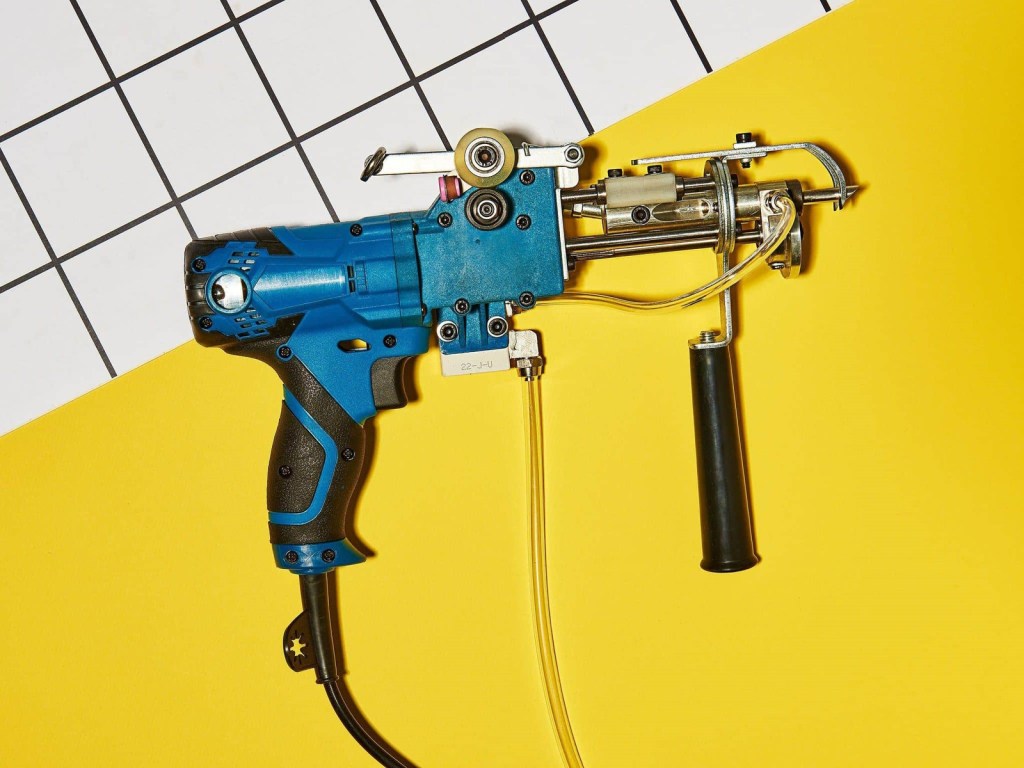
Ok, so you want the absolute best tufting gun and money isn’t an issue?
Well, the AK-III is the model for you.
It has many of the same great design elements of the AK-I and AK-II above, but comes with extra parts and features that make it a combo tufting gun. You can think of it as a suped-up version of the Duo.
Like the Duo, this model is relatively easy to use, but there is one big caveat. This is an industrial-grade pneumatic tufting gun, so to use it you’ll need some kind of compressed air system. Personally, I recommend this one, but there are plenty of other options out there.
That alone will likely add to your setup costs enormously, and the tufting gun itself is one of the priciest on the market. However, it’s also one of the only high-pile tufting machines on the market.
(At least until the Duo-mid and Duo-high pile machines launch.)
Still, it can be a great investment for the truly dedicated tufter with a large budget. For such an expensive machine, I highly recommend buying from Tuft the World, since they have the best after-market support in the biz. Don’t forget to save 15% with the code TINY!
6. ZQ-II Cut and Loop Pile Tufting Gun
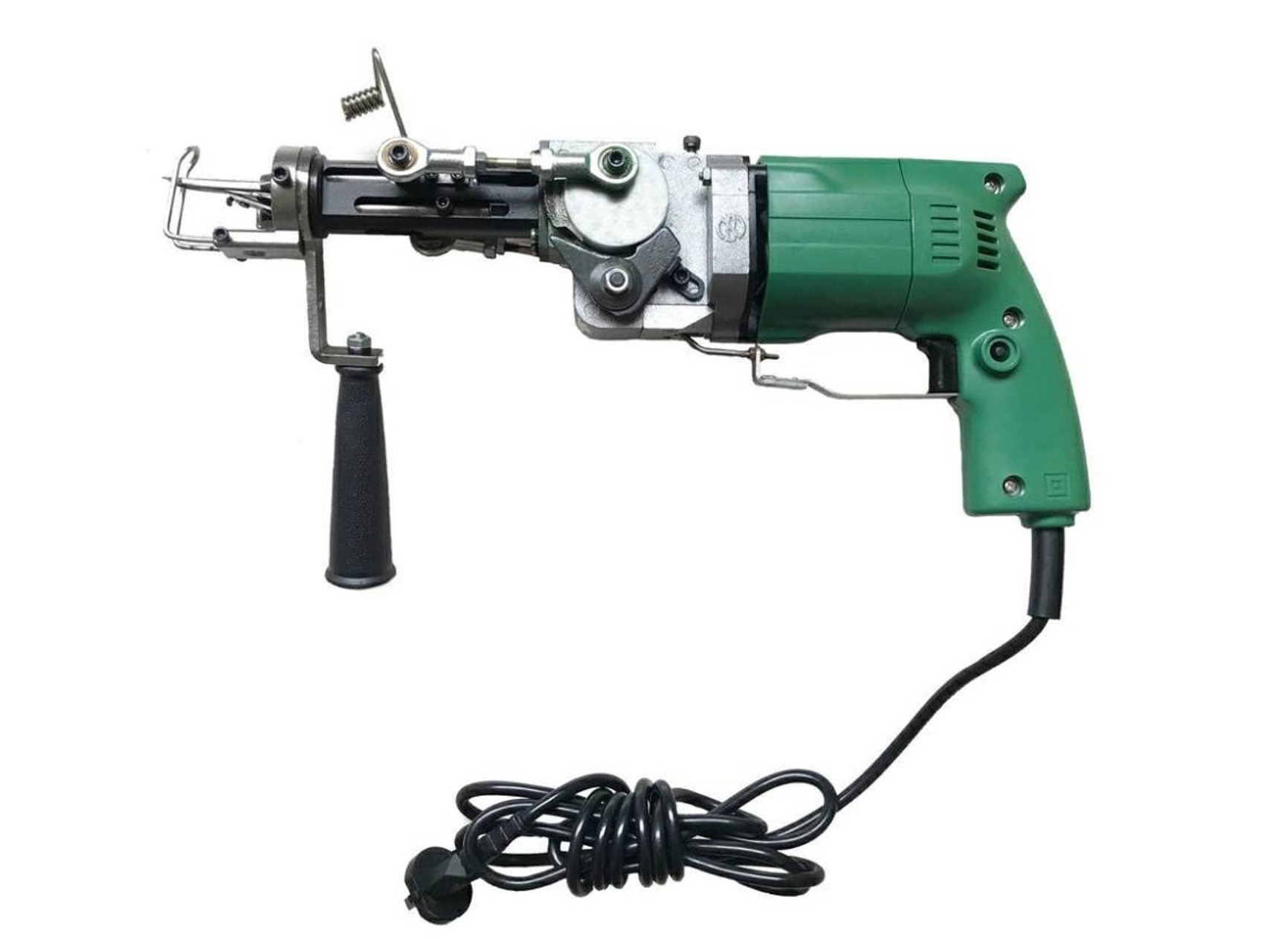
My last pick for the best tufting guns is the ZQ-II. It’s the older version of the KRD-I listed above, but it’s still a very capable machine.
Again, it’s capable of both cut pile and loop pile work, but it’s considerably heavier and more finicky to set up than the other models on the list.
That said, if you know someone who can show you the ropes, you’ll be tufting away in no time. You also don’t need to invest in an air compression system, which is great for small or residential workspaces.
Learn more at the link below, but be aware that supplies are limited so it may be sold out soon!
Other tufting supplies

Unless you buy a full tufting starter kit from one of the links above, you’ll need a few more tufting supplies before you can get started.
I have written a full list of essential rug tufting supplies for beginners, but I’ve also listed the basics below, as well as a few cheaper alternatives for those on a budget.
Yarn
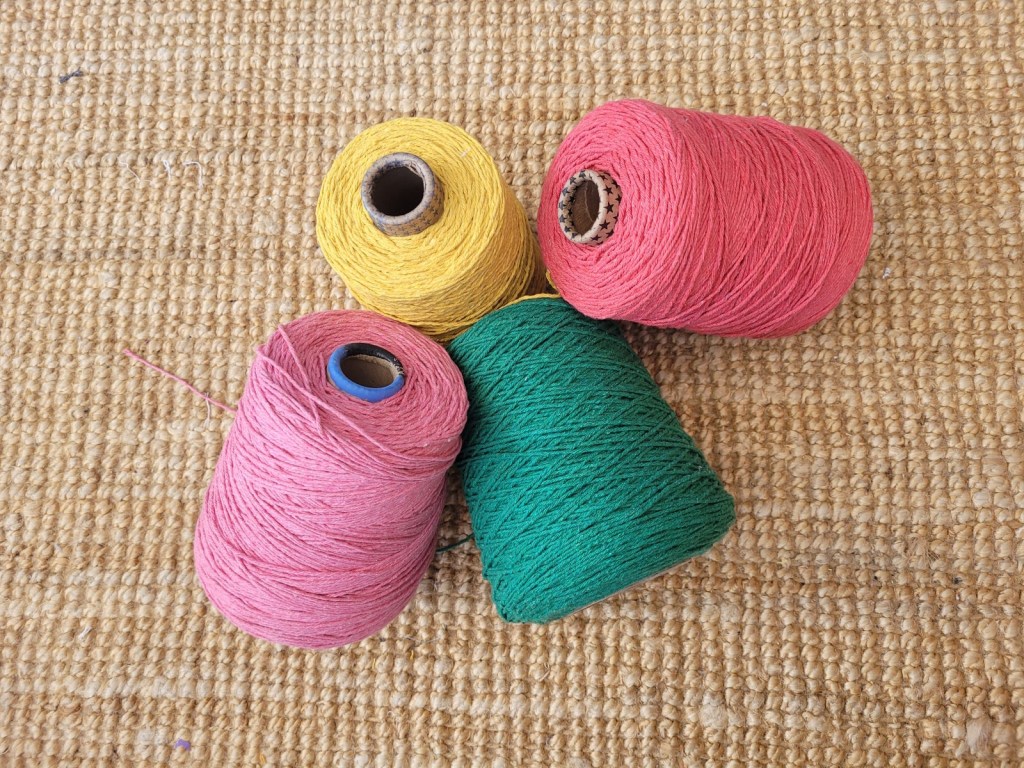
The first and most obvious tufting supply you’ll need is yarn. And lots of it.
I’ve written a full guide to the best yarn to use for tufting, so check that out if you want to learn more.
The good news here is that just about any yarn is suitable for rug making. However, each one will yield different results, so it’s best to experiment before starting your final piece.
Natural wool, synthetic fibers, and even metallic and conductive yarns will work. Cheap acrylic yarns will work and are extremely affordable, but for long-lasting rugs you’ll want to stick to rug-grade cotton or wool.
Perhaps the most important thing when buying is to buy yarn that comes wrapped around a cardboard cone. These feed into your tufting gun much more smoothly and prevent any snags while you’re working.
I’d also recommend buying two cones of each yarn you’re going to use and feeding them both into your tufting gun at the same time. This will result in a much thicker, more professional-looking rug.
You can also, of course, wrap any yarn around an empty cardboard cone if you have one handy. A yarn winder will speed this process up tremendously.
Backing cloth
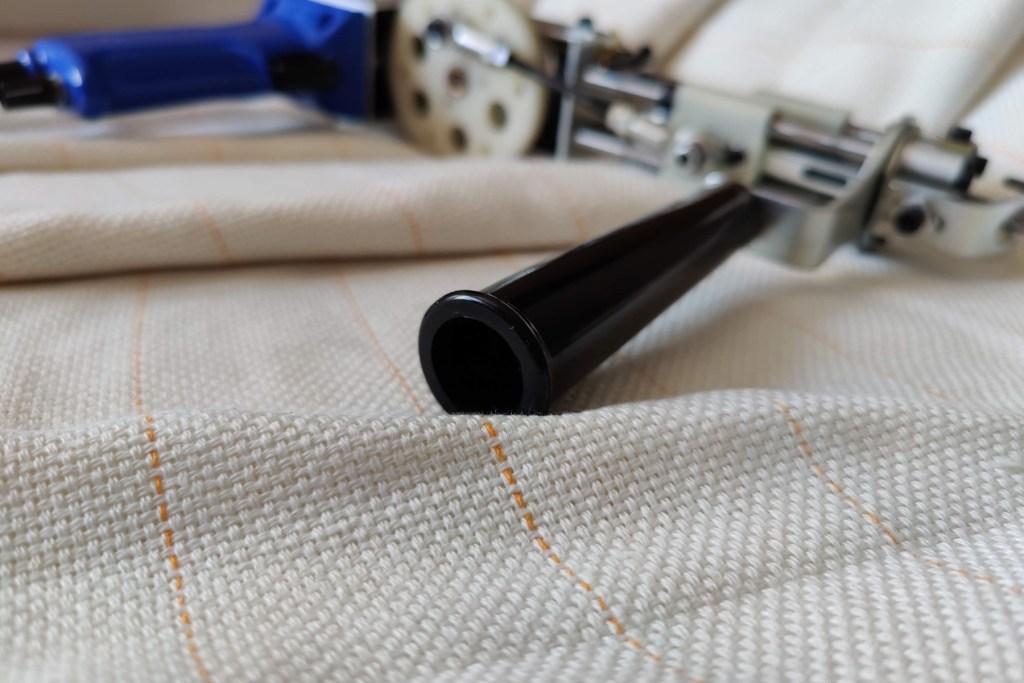
Another absolute essential is backing cloth. This is the cloth that you’ll use the tufting gun on, and quality here really matters when it comes to the longevity of your rugs.
I’ve written a guide to tufting cloth that goes into the details, but here’s what you need to know.
The absolute best material is primary tufting cloth. This tough, lightweight material is made for tufting, and even has grid lines printed on the fabric to help keep track of your designs.
It’s also readily available to buy online. You can get it on Amazon, but I prefer supporting small businesses like Tuft the World, which carries it in two different colors (and you can save 15% with the code TINY).
If you want to save a bit more money, you can also try burlap, monks cloth, or linen. These are significantly cheaper, but are more prone to ripping or tearing, especially for beginners.
Still, they’re a good option for practice pieces or quick rugs on the cheap! You can buy those fabrics just about anywhere.
Frame

Most tufting supplies will need to be bought, but one thing that can be easily DIY’d is a frame. This essential component is where you’ll stretch your backing cloth for tufting.
As such, size is an important consideration. If you just want to make small rugs, a smaller frame will do. But for large, centerpiece rugs, you’ll need a huge frame.
The easiest way to make one of these is to slap together some 2x4s, add some large, sturdy legs, and round the frame with carpet tack strips. Here’s a build video with more details.
All of these supplies are readily available at your local box store, but you can also buy a frame if you’re really limited on time.
Rug adhesive
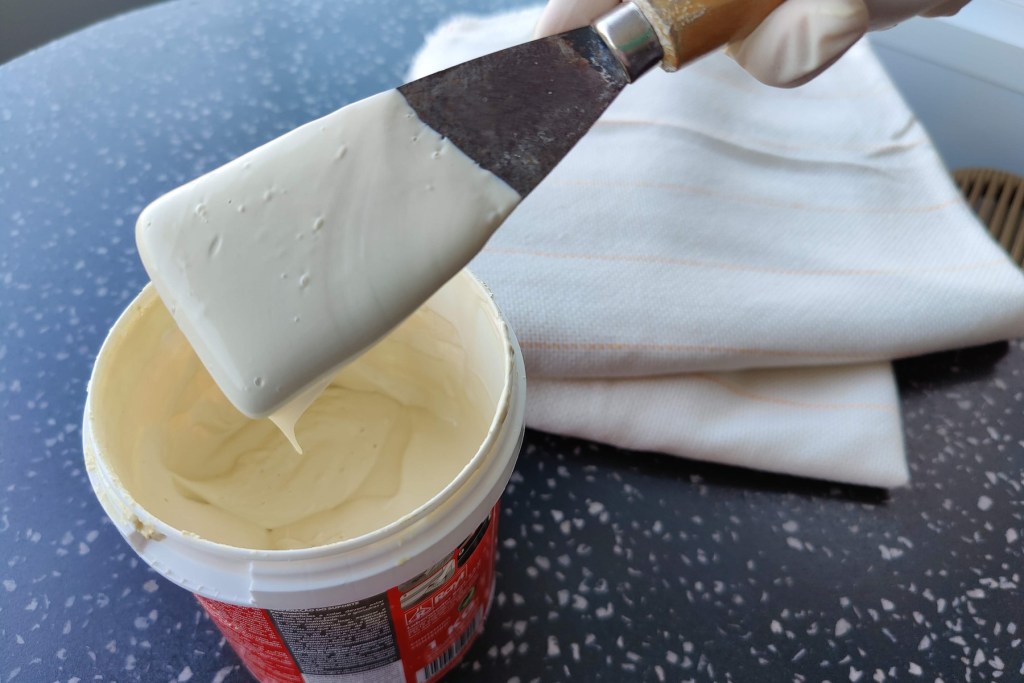
If don’t want your rugs to fall apart the moment they’re finished, you’ll need to invest in a high-quality latex adhesive.
This is often the final step of rug making, but it pays to have your adhesive ready ahead of time. And you will need a lot of adhesive.
I’d recommend a large tub of latex adhesive like this one. If you’d like to learn more about what’s out there, check out my guide to all the best rug tufting glues you can buy.
You can simply use a paintbrush (or a gloved hand) to brush the back of the rug with the adhesive before removing it from the frame. When it dries, latex glue remains flexible so it won’t crumble, and provides a perfect anti-slip backing for any surface.
PVC and vinyl backing materials are also decent options for wall hangings, but these tend to be harder and heavier. For floor rugs, stick with latex glues to avoid the hassle.
You may also be able to find this kind of glue in big box stores or local specialty shops. Just make sure it’s the right kind for rugs.
Other tools
A few other tools you may need in your rug making journey are a trimmer and electric scissors to finish your cut-pile rugs, white mineral oil for lubrication, tweezers, thread snips, and a large drop cloth to protect your floors from damage.
Some tufters also use an art projector to enlarge their designs before starting to tuft, but you can also use a simple grid to get accurate results. Remember, you can always use the tweezers to pull out any erroneous threads!
Other FAQs
Where can I buy a cheap tufting gun?
There are some inexpensive tufting guns on Amazon and other retailers, but I wouldn’t recommend them. They tend to break down frequently. A better bet is to ask around local craft groups (or online communities) to pick up a second-hand tufting machine. You can also save 15% with the code TINY at Tuft the World, which really helps take the sting off.
How do I change the speed of my tufting gun?
Depending on the model, there may be a knob at the base of the handle to adjust speed. Other models support both 110V and 220V power, so swapping to a regular outlet may slow the speed. Many shops also allow you to choose the plug type when buying.
What kind of oil should I use to lubricate my tufting gun?
You should lubricate your tufting gun before every use, and the best option for this is white mineral oil. This won’t gum up your machine, and it’s even sold with a handy telescoping spout as sewing machine oil.
Do I need a tufting gun to make rugs?
No! There are plenty of manual techniques to make rugs as well, most notably punch needle and latch hook. These are more time-consuming but tend to have cheaper starting costs. Check out our guide to how to make a rug without a tufting gun to learn more.
How long does it take to make a rug with a tufting gun?
It depends on how large the rug is and how complex the design is. Generally, smaller rugs can be tufted in a few hours, plus a little extra time for gluing, trimming, finishing, etc. You will need to wait at least 24 hours for most glues to dry, however.
How much does a tufting gun weigh?
Simple tufting guns weigh around 3lbs (1.5kg), but some larger models, like the AK-III, weigh 4lbs or more (2+kg).
Is using a tufting gun hard?
Tufting guns are generally very user-friendly, especially simple models like the AK-I and AK-II. You can also fix mistakes by removing fibers while tufting, and cleaning up fuzzy lines with scissors after gluing.
Can you use monks cloth with a tufting gun?
Yes! Monks cloth is a cheap backing material that works well with tufting guns. However, note that it is weaker than primary tufting cloth, and more prone to tearing.
That’s all for this tufting gun buyer’s guide! Which machine will you be getting to start your tufting journey? Let everyone know in the comments below!

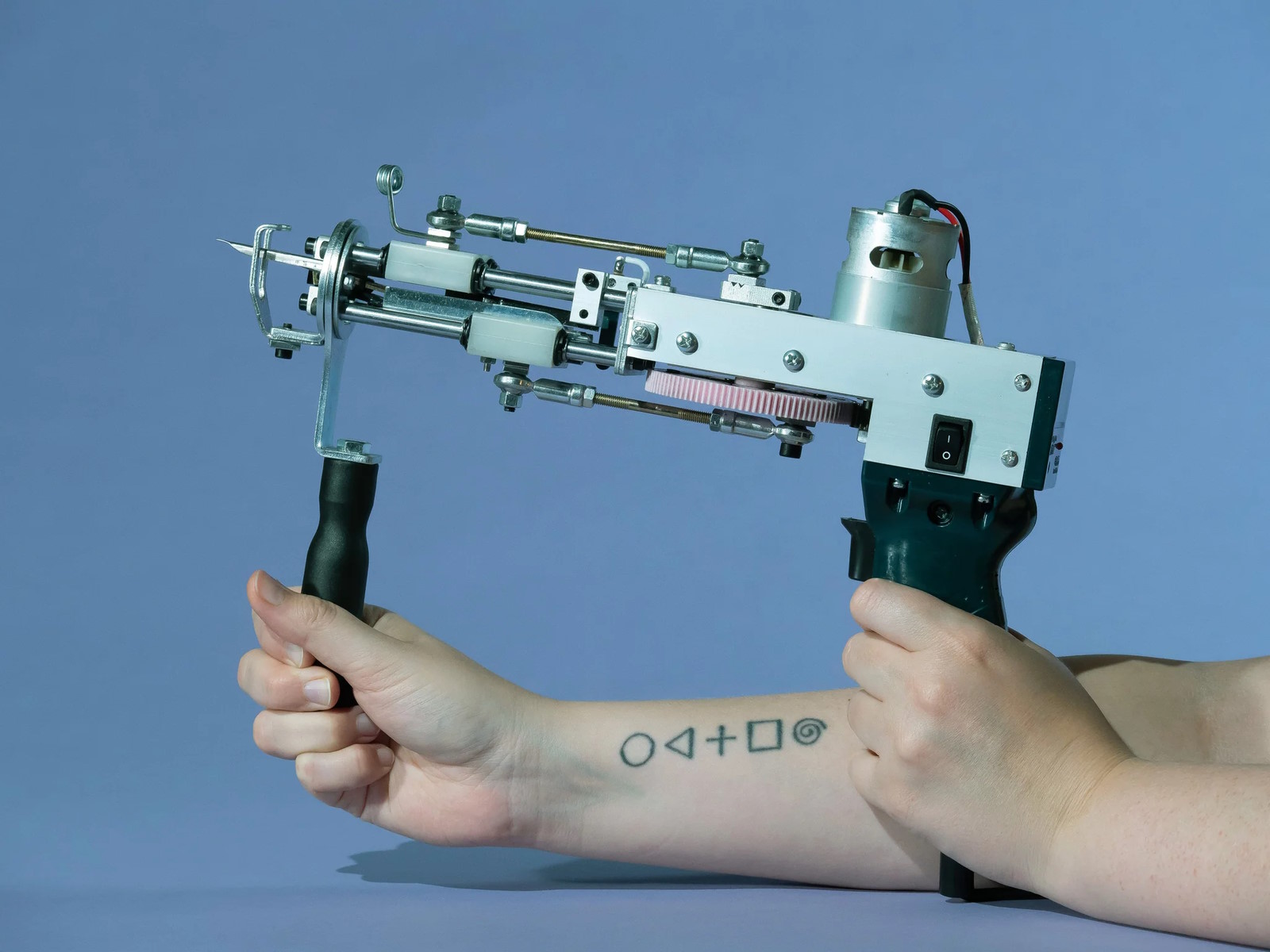
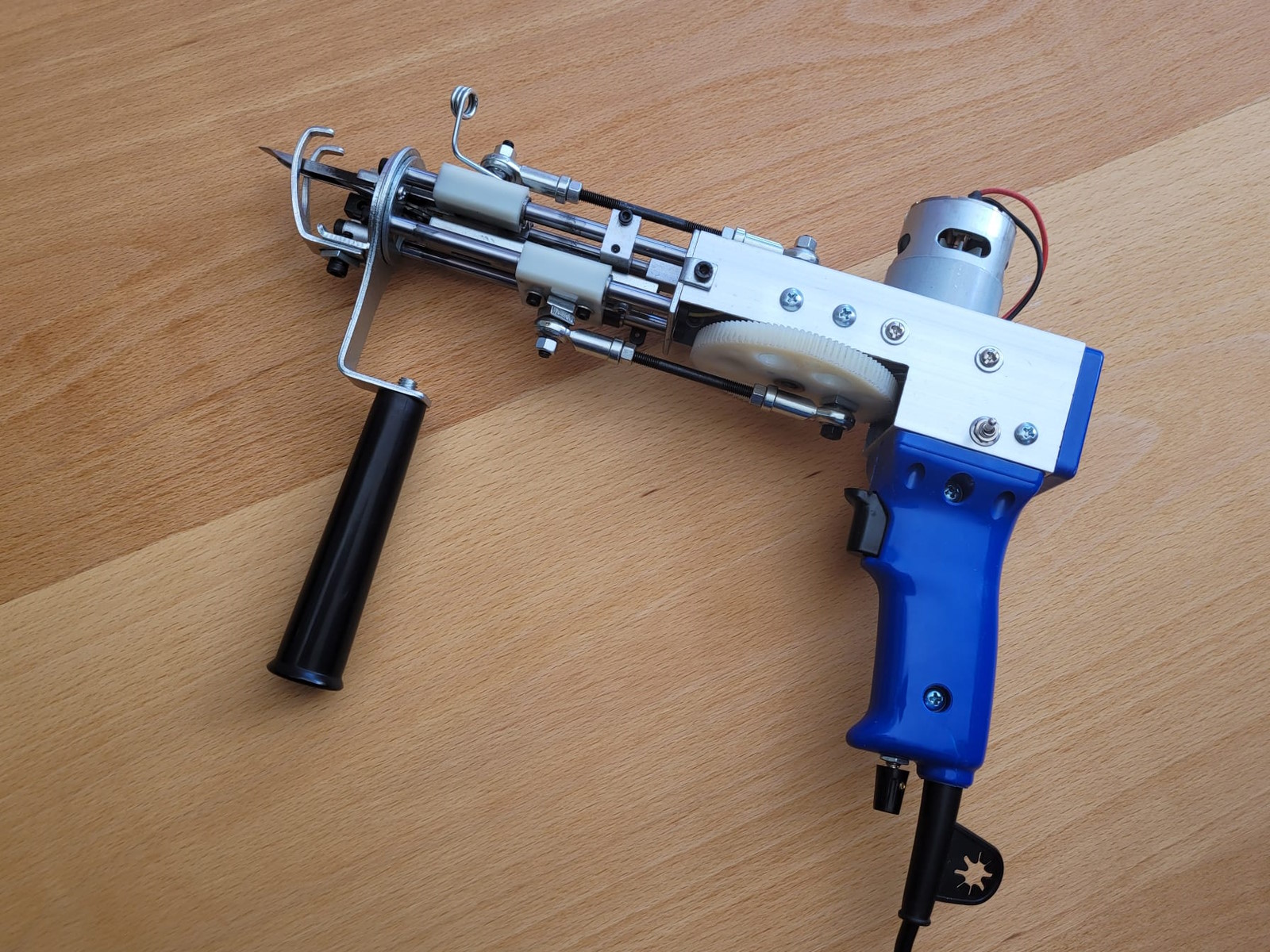
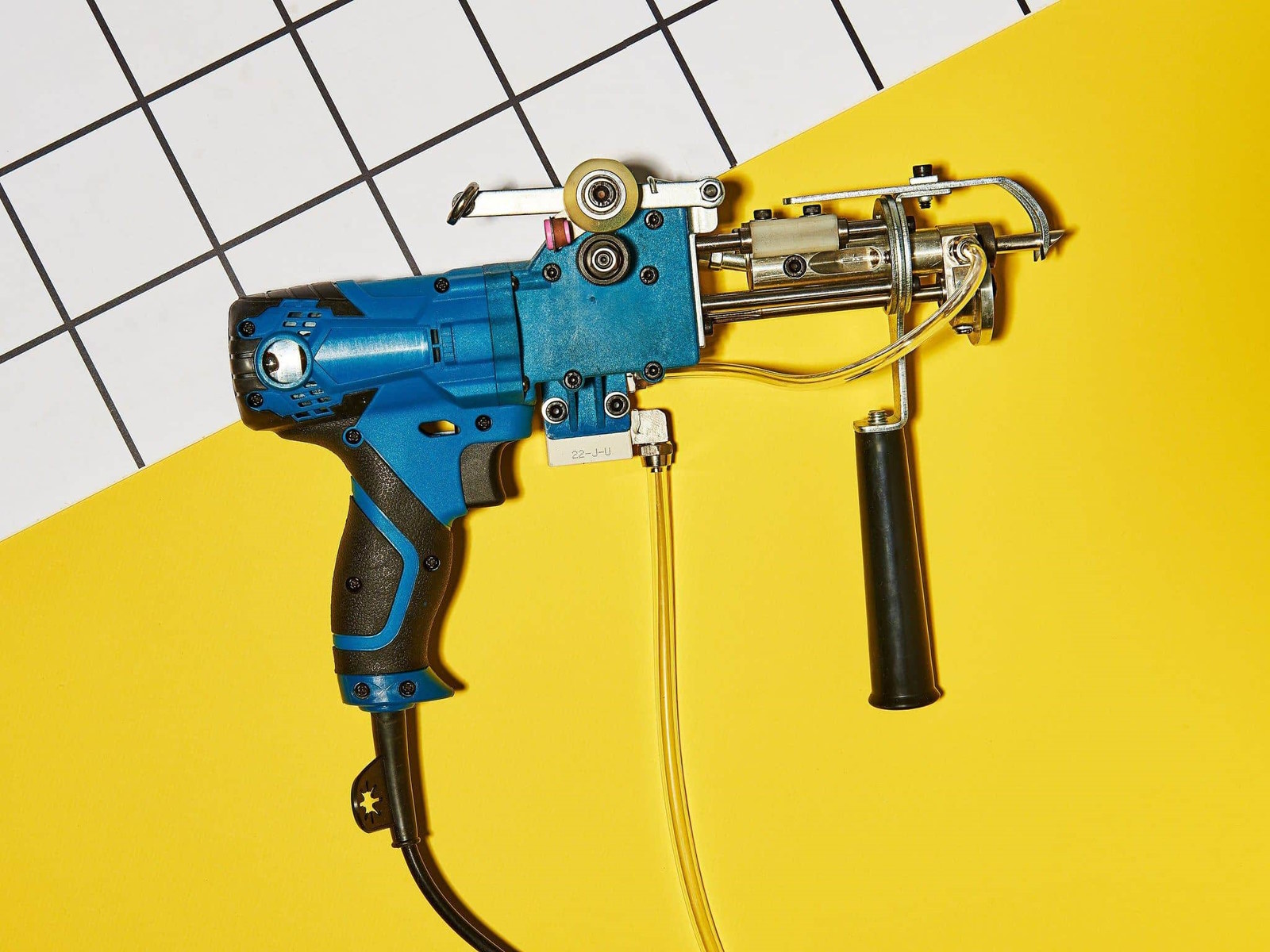
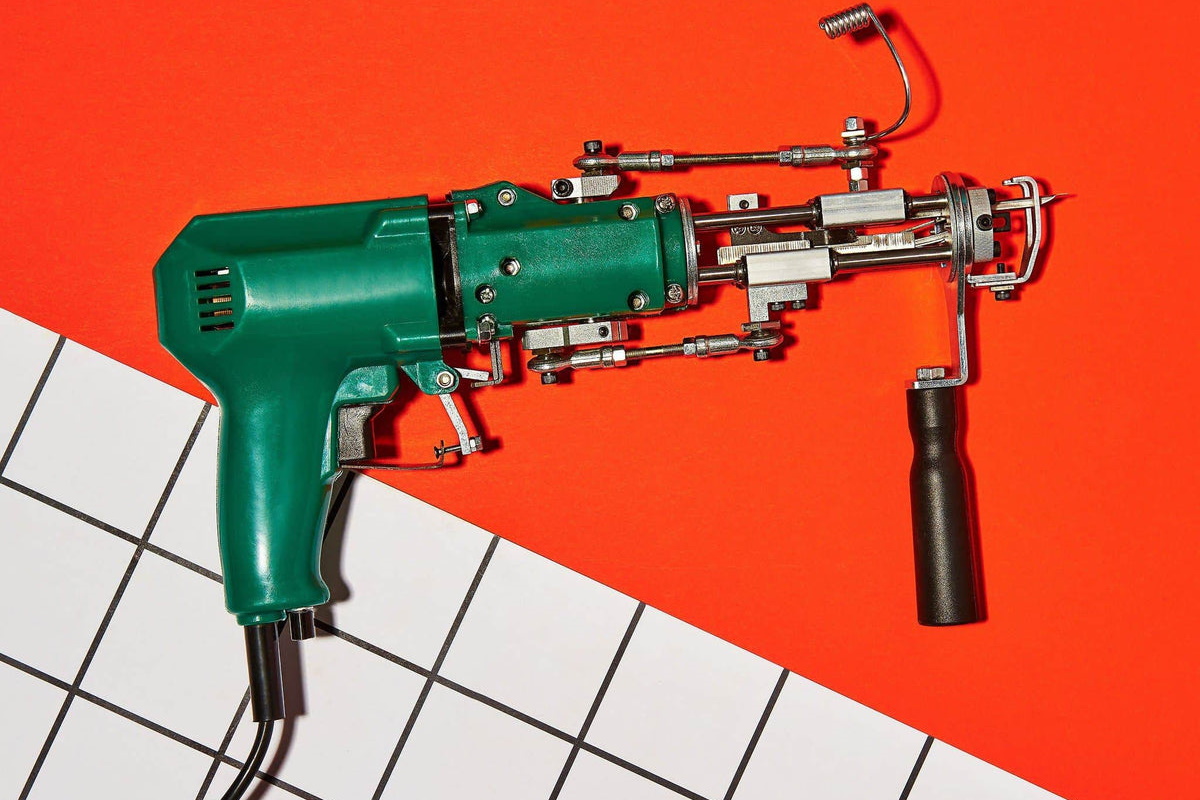
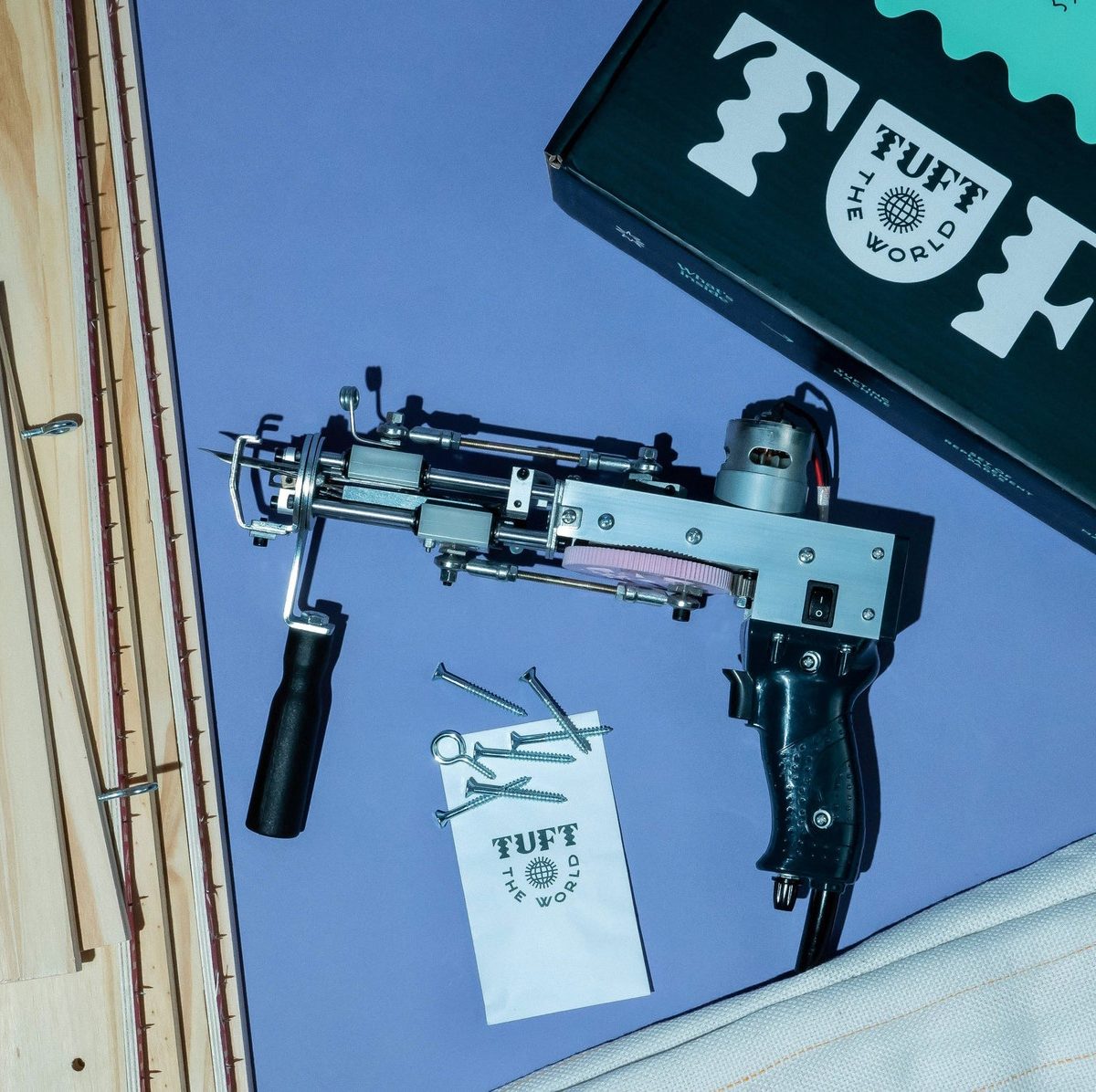
Leave a Reply